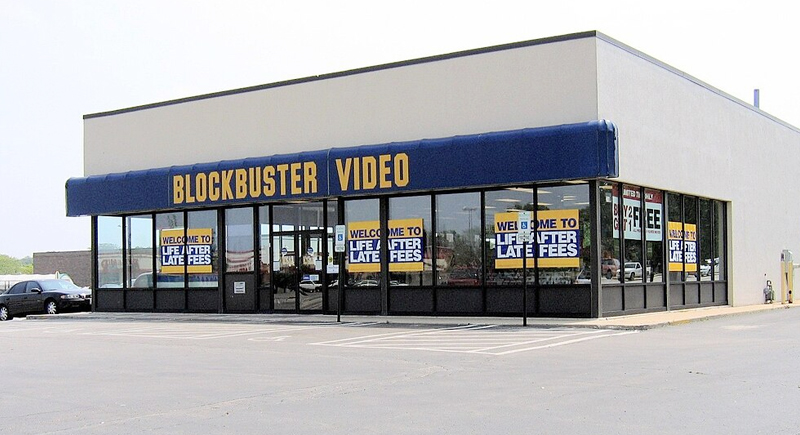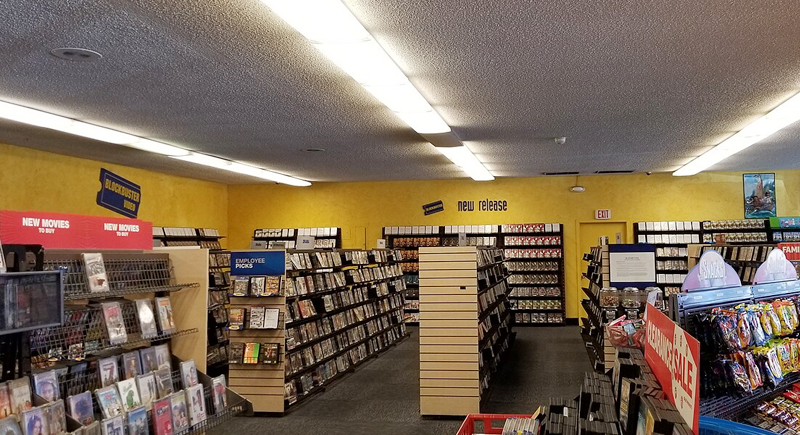The Real Reason Blockbuster Went Out of Business (It Wasn’t Just Netflix)
There was a time when movie night didn’t start until you stopped at Blockbuster. You’d wander the aisles, scanning rows of plastic cases, arguing over what to rent, and hoping the last copy of the new release hadn’t been snagged. The smell of popcorn and that familiar blue-and-yellow glow made it feel less like shopping and more like a small tradition.
But somewhere between the late fees and the glossy posters, the empire began to crack. Most people say Netflix killed Blockbuster, but the truth runs deeper. The real downfall came from within—a company too big, too confident, and too slow to see that the world of movie night was changing right in front of it.
The Peak That Hid The Problems

Image via Wikimedia Commons/Joe+Jeanette Archie
At the start of the 2000s, Blockbuster seemed unstoppable. It had 9,000 stores around the world and a movie selection that made competitors irrelevant. But that power came with blind spots. The company didn’t just miss where entertainment was headed. It resisted it. Netflix, then mailing out DVDs in little red envelopes, offered something that felt revolutionary: no late fees, no pressure, and unlimited rentals for a flat fee.
When Netflix’s Reed Hastings pitched a partnership in 2000 by asking Blockbuster to buy his young company for $50 million, the offer seemed like a joke. Blockbuster had just raised hundreds of millions in an IPO and couldn’t imagine needing help from a startup that didn’t even own a store. The team laughed him out of the room. Six years later, Netflix had over six million users, and Blockbuster was playing catch-up with a digital service of its own.
When Debt Became The Real Enemy
The problem wasn’t just about strategy; it was about survival. After Viacom bought Blockbuster for $8.4 billion in 1994, the company was saddled with more than a billion dollars in debt. That weight only grew heavier when the 2008 financial crisis hit. Netflix had cash to invest, but Blockbuster didn’t. On paper, it still looked solid; in reality, it couldn’t afford the shift to digital that would have saved it.
Former executives later said the company was headed in the right direction. It had launched its own DVD-by-mail program and even rolled out an early streaming platform. But Netflix was moving freely while Blockbuster was stuck paying rent, staff, and loans. The money that once built its empire had become the anchor that dragged it down.
Internal Battles And Missed Chances

Image via Wikimedia Commons/Coasterlover1994
Inside the company, leadership was divided. CEO John Antioco saw the warning signs and pushed to remove late fees and pour millions into online operations. Activist investor Carl Icahn fought those changes, claiming they hurt profits. When Antioco was forced out in 2007 and replaced by Jim Keyes, the strategy reversed. Keyes doubled down on physical stores and cut the digital investment that might have saved the brand.
That decision sealed Blockbuster’s fate. Its ambitious Total Access program, which let customers exchange mailed DVDs for in-store rentals, attracted users but cost the company about two dollars per exchange. When fees went up to offset the losses, customers left. Within three years, the empire collapsed under a billion dollars in debt.
The Last Movie Night
By the time Blockbuster filed for bankruptcy in 2010, the world had moved on. Dish Network bought what was left in 2011, but the chain had already faded. The final store, in Bend, Oregon, still rents movies today, mostly for nostalgia. It’s a reminder that people didn’t stop loving movie nights. They just found easier ways to have them.
The truth is, Netflix didn’t kill Blockbuster. The company was brought down by its own hesitation, heavy debt, and an outdated mindset that punished the very customers who made it successful. The warning is still relevant: big brands rarely fall overnight. They crumble when they mistake their dominance for immunity.